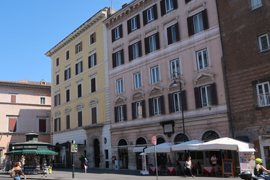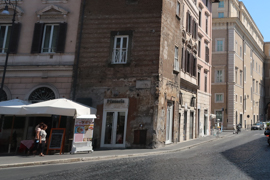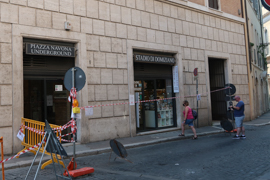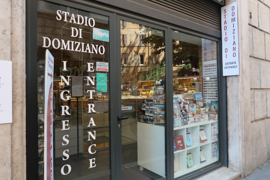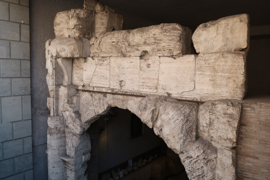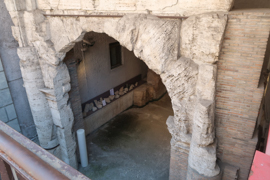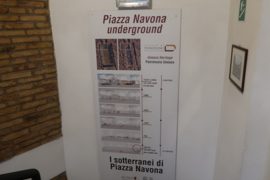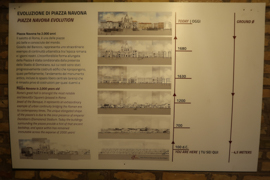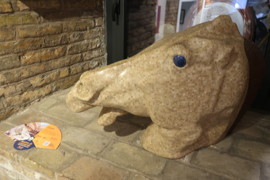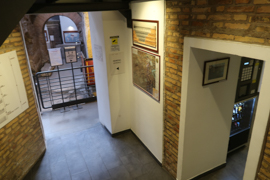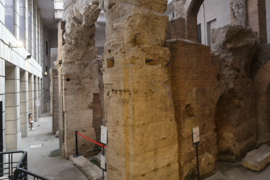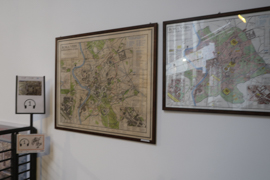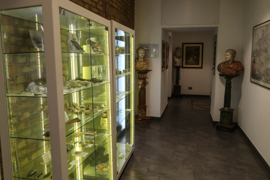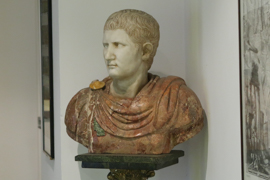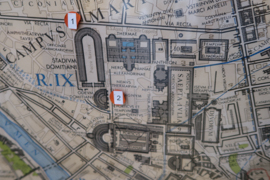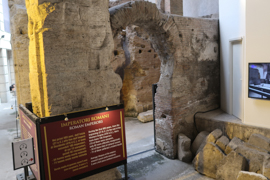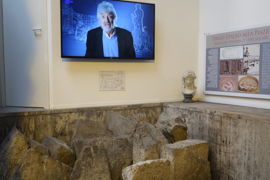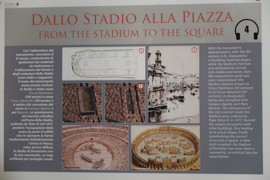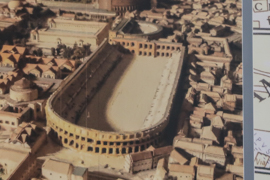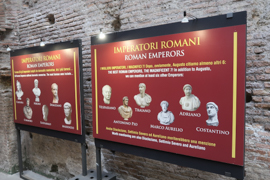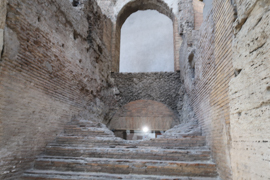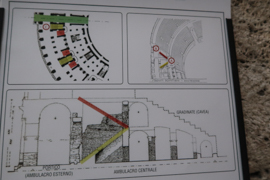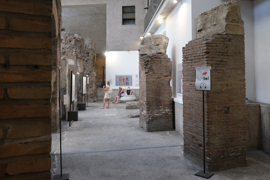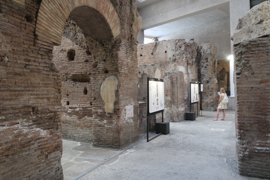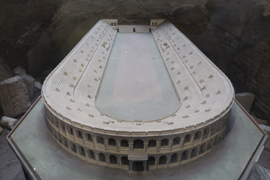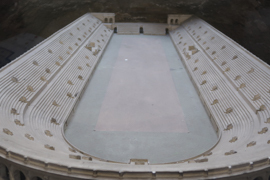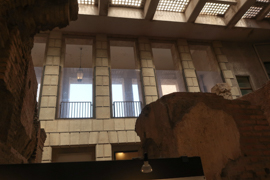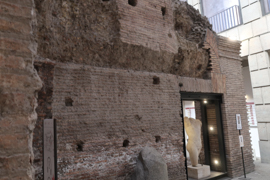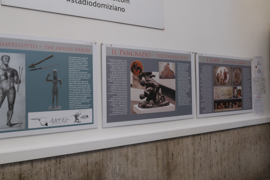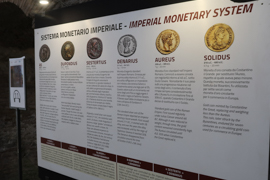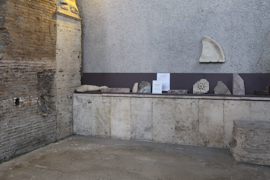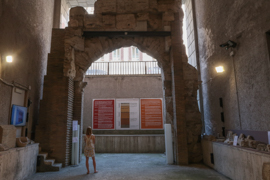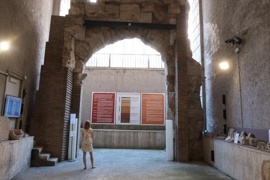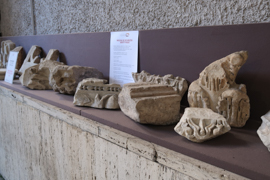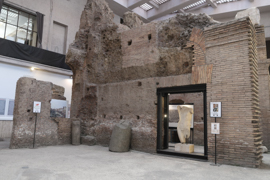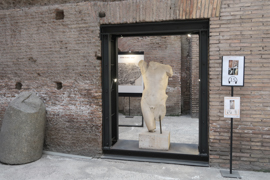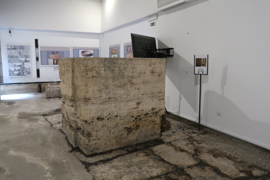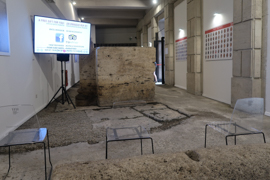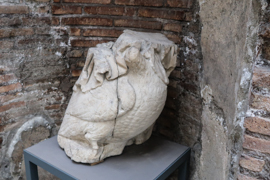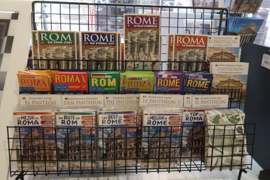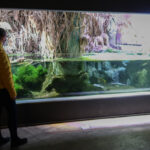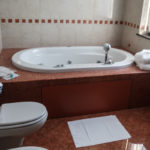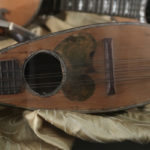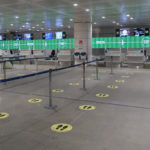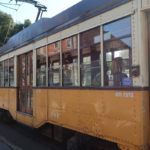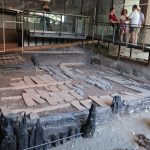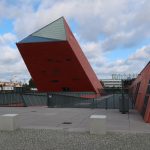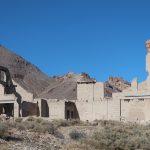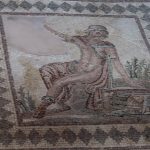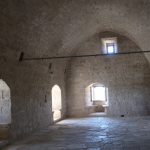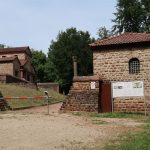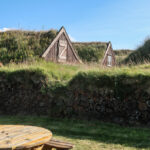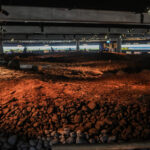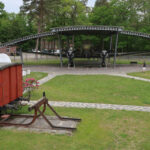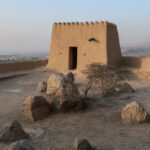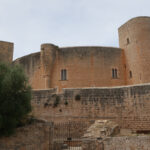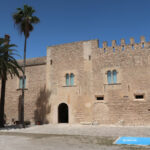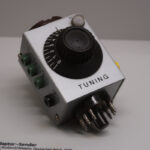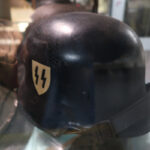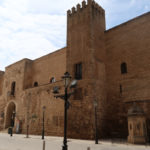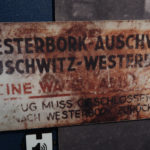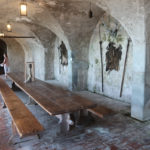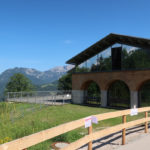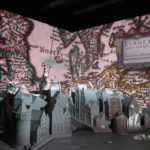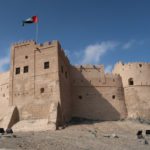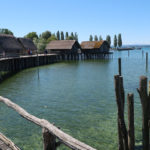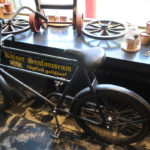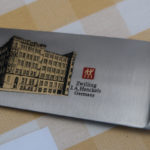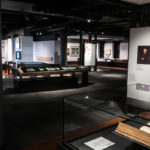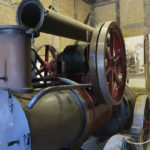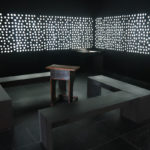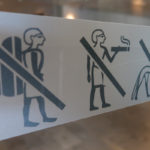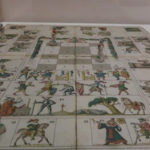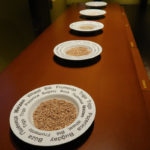Stadium of Domitian
8.50 / 13 EUR
Flyctory.com Pros
- Nice Roman stadium in a relaxed atmosphere
- Piazza Navona as such is worth visiting
Flyctory.com Cons
- Of, course, not as impressive as the Colosseum
The Stadium of Domitian – or Stadio di Domiziano, as the locals say, may not be one of the classic tourist attractions, but one of these many interesting historic sites in Rome. At this place, you can explore the foundations of a historic Roman stadium. When I read about it, I felt to visit this place during my Four Countries, Four Trains tour in August 2020. Here is my review.






Stadium of Domitian – Location & Admission
The former stadium and the museum is located at the Piazza Navona, right South of the Tiber. Within short walking distance, you can have a boat trip on the Tiber River or stroll to Trevi Fountain. There is a bus connection to the Zanardelli stop, which is operated by numerous bus lines. Due to the thin network in Rome, this museum has no connection to the metro network.
During my visit, you could only visit the standard route, which only contains the curve of the stadium. The museum gives a forty minutes visiting time at the museum, which is quite realistic. Adult admission for that is 8.50 EUR. Including the stands (Tribuna), the visit is some 60 minutes and has an admission of 13 EUR. The museum is opening daily 10:00 to 19:00hrs, Saturday until 20:00.


Stadium of Domitian – Some Facts
The Stadium of Domitian was built around 80 AD. The capacity was roughly between 15,000 and 20,000 people. Thereby, the stadium came with the classical U shape and a length of some 200 to 250 metres, the most far away seats some 30 meters above ground. The stadium was used for athletic competition, but during a fire in AD 217, it even hosted some gladiator contests. You can nowadays still estimate the size of the stadium from outside very well – as the area floor and the lower arcades are quite close to the size of nowadays Piazza Navona.


Stadium of Domitian – The Visit
Included in the admission, there was an audio guide. It worked in a way which is not that frequently used at tourist attractions: you receive the pen-shaped guide as well as a map of the museum. If you use the pen and point on certain spots on the map, this activates the commentary, which is of course available in all major touristic languages as well as Italian.

The entrance is on street level, but you have to walk down a bunch of stairs to finally be on original arena level and see the excavations. The museum is really nicely structured. You do not only learn about the stadium itself, but also the competitions held there and about life and games in Rome in general. Thereby, the audio guide is just a bit too much on the too long side for me – which likely means it is quite perfect for most visitors.














Some parts of the museum are quite general, others are close to the exhibits you see. I also loved to have a model of the stadium to explain the size and the structure better. Very few parts of the excavation can also be seen on street level – but I would definitely opt to visit this small museum if you are around.























Stadium of Domitian – Services
The staff was very friendly and spoke English very well. The entrance on street level features a shop with souvenirs related to the place as well as general Rome literature and memorabilia.


Stadium of Domitian – My View
It is too much to call the Stadium of Domitian a must-visit when in Rome. But definitely, you have a good time, it is a good exhibition and it is much more relaxed than boxing with the crowds through the Colosseum. I absolutely enjoyed it – and if you are in that part of the Italian capital, I would say it would be a shame if you don’t go on that historic stadium tour.
Traveling in Italy
Here are all travel-related postings about Italy:

The final post of the year deals with nothing but the Best Ones. After I shared my Favorite Songs and Favorite Albums and EPs ...

In early December 2025, I had a trip to Florence. It's been quite a while since I visited the Italian ...

I had the idea to this post when I sat in the American Airlines Admirals Club at Pittsburgh Airport (PIT), ...

Covering three match days of the Women World Floorball Championship Qualification in January / February 2025 demanded me to go ...

Covering the World Floorball Championship Qualification in January 2025 almost failed. The rationale for that was finding a suitable accommodation ...

After my 2025 Women World Floorball Championship Qualification coverage in Lignano Sabbiadoro in Italy, I needed a hotel night close ...

With my recent mileage run and the trip to the World Floorball Championship Qualifications in Italy, I had quite a ...

During my most recent trip to the Emilia Romagna, I also visited the Umberto Panini Collection Motor Museum. Yeah, it ...

Damn, it is already four years... And it is more than 2,750 postings since then. On 25th February 2018, I ...

The last stop of a trip through Italy in late summer 2021 lead me to Volandia, an aviation museum (and ...

Even though people might initially think about Lamborghini and Ferrari when it comes to Italian sports car, Alfa Romeo is ...

I am not a religious person at all. The more, it is somehow remarkable that this posting is already the ...

During one of my most recent trips to Milan, I decided to go for a couple of museums driven by ...

Milan-Malpensa Airport (MXP) is the major of the two airports serving the North Italian city. However, there is one issue ...

Without a doubt, the Scala in Milan is one of the most famous opera houses in the world. While I ...

Even though my summer 2021 trip to the Emilia-Romagna was majorly featuring the two Ferrari Museums in Maranello and Modena, ...

Venice is an iconic place by itself - but it has some real key attractions as well. Without a doubt, ...

New regional carrier: since mid-2021, Bolzano Airport (BZO) is operating scheduled flights with their own carrier, SkyAlps. For an early ...

The place the red cars with the horse in the logo made famous: after I already introduced you to the ...

Al Forsan is one of the two smaller districts of the Expo 2020 ground. Apart from the 360 degrees Opera, ...

A 16th century palace, which has been renovated in the late 1990's and turned into a posh hotel - apart ...

South Tyrol, the German speaking region in Northern Italy is quite popular among tourists. The Dolomite Mountains attract many people ...

Without a doubt, Luciano Pavarotti is one of the biggest music legends in recent history. The Italian is regarded to ...

Until 2018, you could travel to Italy to visit the world largest labyrinth. The Labirinto Della Masone near Parma is ...

When staying in Ferrari City Maranello, would there be any better option than staying in a Ferrari-themed hotel? When I ...

What is happening if you are running and airport and you just don't fine an airline which is motivated to ...

Another weekend, another car rental: for my trip to Italy, which majorly featured a couple Emilia-Romagna automobile history places, I ...

I had the first night of my June 2021 trip to the Emilia-Romagna region right in the South of Lombardy, ...

The place where the story of the famous (typically) red cars started? Walking on the routes of the Ferrari company ...

The area around Parma is almost a holy place for foodie lovers. Parmigiana cheese, tomatoes, pasta - a lot of ...

If you know the name Carlo Pedersoli by heart, then you are likely ready to head to Berlin since 27th ...

While being in Italy in June 2021, I in fact had two car rentals. One was a Volkswagen Golf, rented ...

Fancying a trip to Venice? If there is no pandemic and the lagoon city is empty, hotel prices in central ...

Giacomo Girolamo Casanova was born on 2nd April 1725 in Venice. The author and adventurer is definitely a legendary Italian ...

Just before I boarded the Nightjet Single Deluxe compartment from Rome to Munich in summer 2020, I had a night ...

For my two day summer stage to Venice, I had one night at the Hotel Abbazia in the heart of ...

I am really fascinated by Leonardo da Vinci and his concepts / inventions. Thus, during my summer 2020 visit to ...

Meeting Caesar about a kilometer away from the Colosseum? Having a picture with the pope? It is not too surprising ...

Apart from Trenitalia and their Frecciarossa network, there is also NRT (Nuovo Transporto Viaggiatori - "New Travellers Transport"), who are ...

After I had a lovely stay on my Four Countries, Four Trains trip in the Hilton Milan and this was ...

Venice is not only the city of vaporetto rides, Murano glass and the doges - it also has quite a ...

After visiting so many German Rail lounges in my life, I was really looking forward how the more exclusive waiting ...

The first "real" night of my Four Countries, Four Trains trip to Italy in summer 2020 lead me to Milan. As ...

As we used to have a holiday home at Lake Garda, I have been to Venice so many times. Also ...

I wouldn't say that I have an intense fear of heights, but I do treat situations, in which I or ...

On my Four Contries, Four Trains trip in summer 2020, my rail trip on Day 2 was an absolute highlight of ...

Also due to the current situation in aviation, I could follow my idea to invest more time in rail travel ...

While - especially for business reasons - trans-European rail connections may still take too much time for daytime transfers, night ...

On 5th September 2020, I had my very first flight from Venice Marco Polo Airport (VCE), flying with Eurowings to ...

Culture freaks may argue that Milan is nothing without the Scala and sports fans think about iconic soccer battles - ...

Heading back home. As said in the Day 3 coverage, I did not expect too much going on on that ...

A Day in Rome - for this Day 3 part of the Four Country Train Trip report, I decided to ...

Being in Milan until the early afternoon, checking out an Italian rail lounge for the first time - and then ...

So excited to travel again and do a proper. I did my first day of the rail rides through Germany, ...

After having so many trip reports involving flights and road trips, this trip report will completely leave me on the ...
Historic Museums
Here are all other postings on Historic Museums:

Especially based on the fact that the Belgian capital is just some two hours away from my residence, I comparably ...

When I visited the Women Handball World Championships 2025 in Trier, my hotel was in Luxembourg. Almost every day, I ...

The Münchener Residenz ("Munich Residence") is one of the most iconic places in Munich. From 1508 to 1918, it was home of ...

I did not have too much time in Jakarta, when I visited Indonesia in October 2024. On top of that ...

The Prater is one of the key touristic areas of Vienna. I already took you to several places located within ...

The Harz region will always be a special place to me. I studied mathematics at Clausthal Tech University and thus ...

The story of Bryggens Museum (or Bymuseet in Norwegian) started with a calamity. A fire in 1955 ravaged parts of the ...

Already in 2022, I introduced you to the very interesting Saga Museum in Reykjavik, Iceland. However, there is a similar ...

During my trip to Albania, I learned a lot about the situation of the country during the socialist times. Especially ...

The Goldenes Dachl ("Golden Roof") is regarded to be the most famous and iconic architectural structure of Innsbruck. The palatial oriel has ...

Some 2,000 years ago, the Romans controlled a wider range of Europe. They even made it to (nowadays) Luxemborurg. One ...

I already introduced you to two places driven by the Faroe Islands National Museum (orTjóðsavnið in local language). Namely, these ...

The so-called Negro Leagues were an episode in US-American baseball. Based on the separate but equal principle, these leagues were for black ...

Poland suffered massively under the German occupation and the Second World War. Thus, it is not that surprising that Gdansk ...

When I visited Vienna in June 2024, I wanted to spot a wide range of the city's attractions. Among them ...

My April 2024 Pittsburgh Penguins trip brought me back to Washington D.C.. I decided to add visit some places, which ...

A musieum about nuclear power and atomic bombs? Sounds like a place which is either a great scientific one - ...

As I am traveling to the United States rather frequently and also love to follow Feli from Germany (formerly German Girl in ...

Going back from Las Vegas to Los Angeles after the New Year's Eve celebrations, my wife and I opted to ...

I really like the museums in Sharjah. One of the museums I visited in the city right North of Dubai ...

Even if you visit Cyprus due to the nice climate and the beaches only, you might make it to Nea ...

There are so many art museums and technical museums out there. However, do we really care sufficiently about the items ...

The Presidents Hall of Fame is having quite some fame, even though it is not located very close to the ...

Typically, people associate Myrtle Beach in South Carolina with fun and leisure activities. Enjoying the sun at the beach, hanging ...

The Arabia steamboat is something like what the Vasa is for European ship history (just dated a few centuries later...). The side ...

Not only due to his 1963 speech in Berlin, John F. Kennedy is definitely one of the most popular US-American ...

I already introduced you to Bunk'Art 1, a former nuclear-proof governance bunker in the outskirts of Tirana. The huge area ...

Under the leadership of socialist Enver Hoxha, a massive number of bunkers has been built in Albania The German wikipedia ...

The Museum of Jewish Heritage in New York City also calls itself A Living Memorial to the Holocaust. Even though I ...

Kourion Archaeological Park has definitely been one of the highlights of my trip to Cyprus in October 2023. However, this ...

My wife and I really enjoyed our trip to Cyprus in October 2022. So far, I have introduced you to ...

If you are in Dublin and feel to learn something about the history of the city and Ireland in general, ...

If you nowadays look at the map of Cyprus, you won't find any rail-driven vehicles. However, the country did have ...

While I so far introduced you to parts of modern life in Cyprus, the Mediterranen island is full of history ...

Its own website states The National World War I Museum and Memorial to be the The World's Most Comprehensive WWI ...

The last posting of the year - Best Ones 2022 is introducing you to my best experience last years (as ...

No matter if you like his characteristic tomato sauce or not, Senator John Heinz (yeah, the ketchup guy...) is one ...

The Pergamonmuseum is one of the key touristic places in Berlin. The museum features over 250,000 objects of German-lead excavations ...

Kolossi Castle is one of the key landmarks in Southern Cyprus. The castle has been a stronghold for the Crusaders ...

The world largest collection of weapons - luckily, this weaponry is not the result of a weird US-American NRA believer, ...

Especially when I visit large places, which demand and deserve a major number of pictures, it may take quite some ...

One of the activities I can recommend most in Sharjah is going to a museum. I introduced you to quite ...

Many oeople visit the Canary Islands just due to the reliable climate and good weather. However, there are some really ...

The area around Trier is holding a bunch of records for the oldest buildings and structures in Germany. The rationale ...

The most picturesque tour stop while following the first three concerts of the Weird Al Yankovic Tour 2022 in April ...

During the Nazi regency in Germany, the Emslandlager (Emsland Camps) was a group of concentration and detention camps in the Emsland region, ...

I am not that much into coins and numismatic collections - but when I visited Graz in Austria in summer ...

I felt really happy to have a deeper view to the Northern and East parts of the United Arab Emirates ...

When I had another trip watching my favorite musical Rock of Ages in June 2022 in Portsmouth, I had the rare ...

There are a few Turf House Museums you can visit in Iceland. The UNESCO is even thinking about putting this ...

Apart from the legendary Blue Lagoon, the Viking World / Vikingheimar in Nardvik on Reykjanes is likely one of the most ...

I am not a religious person at all. The more, it is somehow remarkable that this posting is already the ...

During a trip to the German North Sea shore in later 2021, we also visited the Automobil- & Spielzeugmuseum Nordsee. The ...

The Settlement Exhibition Reykjavik (sometimes also with an added ± 871) gives you an insight of the 10th century settlement ...

After the end of World War II, the blocking of access to West Berlin by the Soviet Union (the so-called Berlin ...

My trip to the United Arab Emirates in February 2022 majorly lead me to the Northern part of the country ...

Germany between World War II. - this is roughly the mission of the House of the History of the Federal ...

Bellver Castle - or Castell de Bellver - is one of the most iconic places of Palma de Mallorca. The ...

You might not make it to the Mallorca city of Manacor just to visit their history museum - but the ...

When I visited the harbor-area attractions in Reykjavik, I felt it is a good opportunity to share as many of ...

Hauptstadt der Spione - "Capital of the Spies". This is a book, which you can buy at the souvenir store of ...

In quite some postings about the emirate North of Dubai, I already stated how much I value and enjoy the ...

Quite a while ago, I took a trip to Arnhem in the Netherlands to explore the rich WWII history of ...

It is time for the final posting of the years, simply named The Best Ones 2021. After looking into my ...

The Tränenpalast ("Palace of Tears") in Berlin is the former border crossing point between East and West Berlin. It is located at ...

Venice is an iconic place by itself - but it has some real key attractions as well. Without a doubt, ...

While Palma Cathedral or the Palma Arena are regarded to be iconic pieces of architecture in the Balearic capital, I ...

The same faith which applies to Oswiecim in Poland (better known under the former German name Auschwitz) is also valid, ...

Auschwitz is a town's name (adopted to German) which you typically link with murder, cruelty, state-organized mass killings, injustice. A ...

Driving a model landscape or a large model train landscape in Germany is a difficult business: Even if you do ...

There was a duplicate reason to visit the European Hansa Museum in Lübeck in late July 2021: apart from the ...

Not only because auf an early 1990's video game, I am deeply interested in the Hansa and its history. Thus, ...

As I said in other posting, I really enjoy being in Sharjah and feel the vibe of the city and ...

A very interesting rebranding: when I started to explore museums in the nearby Netherlands, the Dutch Freedom Museum in Groesbeek ...

It is almost needless to say that Adolf Hitler was obsessed with megalomanic ideas. Apart from ruling the world and ...

Sharjah is very often underestimated as a touristic destination. In fact, it offers some very interesting museum. The most outstanding ...

The Northern Ireland conflict - or simply called The Troubles is one of the most intense civil conflicts I experienced during ...

The National Monument Camp Vught - or Konzentrationslager Herzogenbusch, which has been the German name during the Nazi era - is ...

Papenburg has some more interesting places other than the famous Meyer Werft. At the opposite part of the town, my ...

Abu Dhabi Khalifa Park is one of those hidden gems which you typically don't find in travel guides (or at ...

The story why I felt I had to visit the Bergisches Museum für Bergbau, Handwerk und Handel - the Bergisches ...

Even though the Netherlands capitulated against Germany just after a few days under attack during World War II, they have ...

There are so many interesting places in Hamburg, which are still on my bucket list. Of course, the Northern German ...

While the Arabian word Etihad for many people first of all stands for a major airline based in the capital of ...

Giacomo Girolamo Casanova was born on 2nd April 1725 in Venice. The author and adventurer is definitely a legendary Italian ...

Nuremberg (or Nürnberg, how it is named in German) has some sort of tough political-historic heritage. Several sites still remember ...

In 1944, the 101st Airborne Division, called Screaming Eagles, landed North of Eindhoven in the Netherlands. As part of the Operation Market ...

When you visit Dubai or the United Arab Emirates in general, you likely think about the parks, skyscrapers, sun and ...

In 1891, Henry B. Plant founded the Tampa Bay Hotel. Nowadays, the National Historic Landmark in central Tampa is no ...

Schloss Burg is just about half an hour away by car from my home town Cologne. The castle on the ...

During a prolonged stop-over at Manchester Airport, I grabbed a rental car for a day and did some sightseeing in ...

The Burg Meersburg (Meersburg Castle) in the city of Meersburg is one of the iconic landmarks in the Lake Constance / ...

It is not even full sure whether Christopher Columbus in fact visited the Columbus House in 1492, before he left ...

Two Olympic Gold Medals and multiple other medals and World Cup victories (with a special focus on Super-G) - undoubtedly, ...

I am really fascinated by Leonardo da Vinci and his concepts / inventions. Thus, during my summer 2020 visit to ...

The Weiße Rose / "White Rose" was a resistance group during the German Nazi regime. Mainly consisting of university students, she ...

The Berchtesgadener Land is not only nowadays well-known as a popular tourist destination, there is also a dark part of ...

The historic Al Shindagha district in Dubai, located right South of the Dubai Creek, is currently undergoing quite some touristic ...

You might find this statement multiple times within my December 2020 postings - but A Christmas Carol by Charles Dickens is ...

Undoubtedly, Amsterdam is not just a beautiful city, but also a place of rich cultural history. One example for that ...

The Munich Toy Museum is one of these typical hidden gems you find in many cities. Right in the city ...

Fujairah is definitely quite underrated as a touristic destination in the United Arab Emirates so far. I have to give ...

Nuremberg is deeply linked to the German Nazi regime between 1933 and 1945. The key reason for that are of ...

Especially in the recent past, I read a couple of ridiculous comparisons between certain people and political groups (which I ...

During my first visit in Singapore, I just wanted to have an overview about the history of the Asian city ...

When you think about Nazi Germany murders, you typically think of extermination camps like Auschwitz or the concentrations camps. A ...

The Mithraeum in London is maybe one of the hidden gems of the British capital. During exvacation works in London ...

One for the most positive surprises of my early July 2020 trip to Amsterdam and Eindhoven was the Channel Museum ...

When people think about the United Arab Emirates, they typically think of Dubai or Abu Dhabi. During my last trips, ...

The Imperial War Museum operates five sites throughout Britain. While I already visited the interesting Churchill War Rooms, I was ...

At least in the Cologne area where I live, Castle Arcen in the Netherlands, close to the German border, is ...

On 1st July 2002, Überlingen at Lake Constance (Bodensee) gain notoriety not only in Germany: two planes, a Tupolev TU-154M ...

The Pfahlbauten (Lake Dwelling) at Unteruhldingen, prehistoric houses built on wooden piles, are one of the Top 5 attractions of the ...

Where is the heart, the center of the European Union? There is really an official answer for that. The Institut Géographique ...

I am not too much of a casino person. However, I love being in Las Vegas as it is also ...

A museum about the history and importance of sea trade in Singapore and Southeast Asia? Sounds much more boring than ...

The Historic Mustard Mill in Cologne ("Historische Senfmühle Köln") is quite a unique place in the million people city. It ...

On the third day of my Weird Al Yankovic & Grass Court Tennis trip in July 2019, I had time ...

One amazing feature of Washington D.C. is the massive number of museums driven by the Smithsonian Institution: they are typically ...

Even more than 80 years after Elvis Presley's birth, Tupelo in Mississippi is still dominated by memories of its most ...

As part of a company event in Paris, I was able to see the Tutankhamun exhibition. Until the completion of ...

Solingen, some 30 km Northeast of Cologne, is known as Germany's headquarter of the knife and scissor industry. Thus, it ...

Founding Father of the United States, printer, author, inventor, scientist, many more... It is likely much easier to list the ...

Bad times of terror, being pried and controlled in a country without the freedom to move - or good times ...

Lindlar, a minor Eastern suburb of Cologne, hosts one of two open-air museums driven by the regional Rhineland authority LVR ...

When Germany intensified their offensive efforts during World War II, Winston Churchill decided to built a bunker in Central London ...

Something we all have in common is that we went to school - at least for a certain time. The ...

How would a visit of Thessaloniki be completed without looking at the ancient Macedonian Times? Visiting the Archaelogical Museum of ...

Liverpool has been one of the most important European cities for slavery trade. Thus, I used my September visit at ...

When people think of real "Eau de Cologne", they typically think about the well-branded 4711 brand located in the city's ...

On 21st October 1941, the German Wehrmacht slaughtered thousands of civilians in Kragujevac, Serbia, to revenge dead and wounded soldiers ...

As I had just limited time in Antwerp after the enjoyable VLM flight, I chose to visit the Snijders&Rockoxhuis, which ...

Casa Loma in Toronto is North America's only full sized castle. Though it might not be that well-known here in ...

The Royal Ontario Museum just feels like an amazing wonderland of topics, a bit of "something for everyone". Did you ...

As I for example stated in my review on Louvre Abu Dhabi, I am quite much interested in ancient cultures ...

The Cologne City Museum's recent history is not really what one would call "lucky". After a water damage in later ...

Maybe one of the most characteristic German products is bread. I even found "German bakeries" during my visit of Taipei ...

My honest first idea about "Louvre" is that it is a place in Paris where people queue and punch to ...
